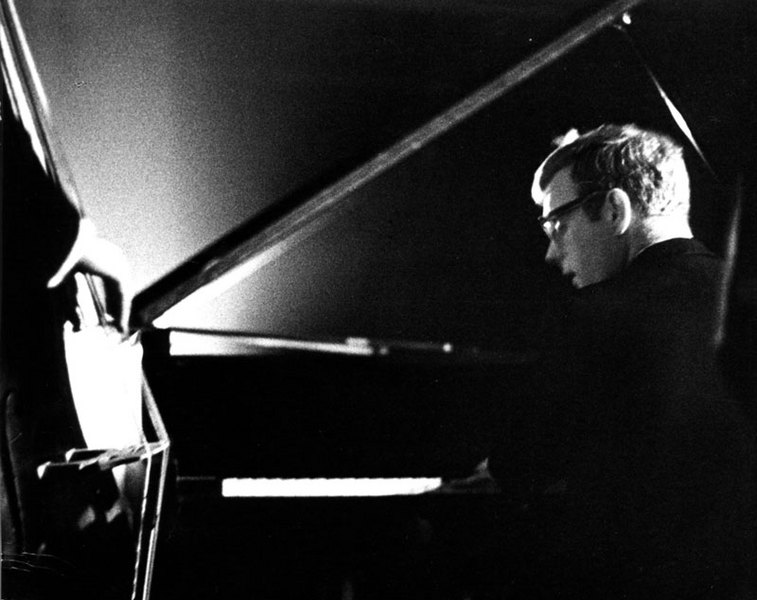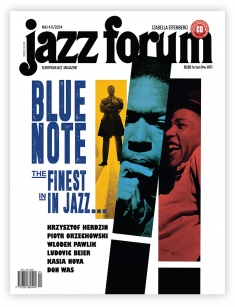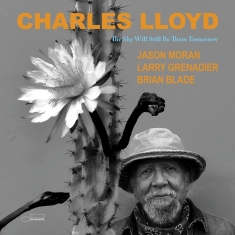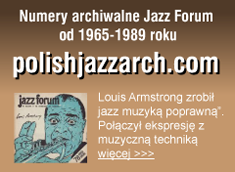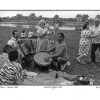KRZYSZTOF KOMEDA: The Lost Leader
Stuart Nicholson
This article by Stuart Nicholson, which first appeared in the British monthly „Jazzwise” (November 2008) is now published, with the author’s permission, in the Polish language magazine JAZZ FORUM 4-5/2009. This issue came off print on April 23rd, which was exactly the 40th anniversary of the untimely death of the legendary pianist and composer Krzysztof Komeda, the father of modern jazz in Poland, a visionary pioneer of European jazz.
“An innovator with a complex tradition, a romanticist expressing himself in the contemporary idiom, a poet of the piano – this was Krzysztof Komeda, one of the musicians who have widened the essence of jazz.” Adam Slawinski.
In 1997, the Polish trumpet player Tomasz Stanko revisited the compositions of a musician who had given him his first major break in jazz thirty-four years earlier. The album that resulted, “Litania: Music of Krzysztof Komeda” (ECM), met with huge international acclaim. It reawakened interest in a musician whose significance outside his native Poland had, in the years since his premature death in 1969, begun to disappear under the weight of jazz history.
However, in recent months, most of Komeda’s recorded work has become available in the UK on CD in a mammoth reissue programme undertaken by the Polish label Power Bros, distributed by Discovery. It has come at just the right moment. The rise of European jazz in the last decade has sparked curiosity in the home grown product and the success of Stanko’s album raised the profile of a man largely credited with launching the modern jazz movement in Poland in the mid-1950s and, with his 1965 album “Astigmatic”, in helping shape, as Richard Williams pointed out in “The Guardian”, “the beginnings of a distinctive European sensibility at work within the language of jazz.”
“I joined his band in 1963, and his compositions were completely fresh and new and what he wrote was great for jazz improvisation,” Stanko says of Komeda. “I was really into this music, Komeda really engaged me with his writing. In those days European jazz was in the shadow of American jazz, but it’s coming into its time now and we can see now how original Komeda was.” Stanko says to have played Komeda’s music still inspires him today.
Krzysztof Komeda was born Krzysztof Trzcinski in Poznan in 1931, taking up piano in childhood. He entered Poznan Conservatory at the age of eight, but almost immediately his dreams of becoming a concert pianist were shattered by the outbreak of Word War II . His family moved to Czestochowa where he took private piano lessons. After the war, his father was appointed director of a bank in Ostrow Wielkopolski, where he and his family lived in the bank building.
Joining the high school band Carioca he performed on piano and accordion. He was “discovered” by bassist Witold Kujawski, who pointed out that the tune In the Mood he was playing was something called jazz, and set about educating him in what the music was all about.
Kujawski invited the young Trzcinski to Krakow during a period that has gone down in Polish jazz history as the Catacomb Era, a period of clandestine underground jam sessions where he befriend musicians such as saxophonist Jerzy Dudus Matuszkiewicz and pianist Andrzej Trzaskowski, who along with Kujawski and two other musicians formed a band called Melomani, meaning “Music Lovers,” the first genuine jazz group in post-war Poland. Trzcinski was not a regular member, but would occasionally join for concerts and jam sessions, sometimes at Witold’s apartment, and dance parties popular during the period. This was the Stalinist era, when jazz went underground as it was banned by the communists as degenerate, immoral and subversive.
Meanwhile Trzcinski began studying medicine in Poznan, receiving his diploma from the Academy of Medicine in 1956 becoming an otolaryngologist, or ear, nose and throat specialist. As the authorities began relaxing their strictures on jazz, musicians began to emerge from clandestine underground concerts to perform in bars and clubs. Trzcinski continued to perform with Melomani and other local bands, including Jerzy Grzewinski’s Dixieland group, but conscious of his position in hospital, changed his name from Trzcinski to Komeda to avoid harassment by the hospital authorities, who still regarded jazz with suspicion.
At that time listening to Willis Conover’s radio programme “Music USA” on Voice of America was an almost quasi-religious experience. The programme went on the air in January 1955 and became immensely popular, at its height attracting 100 million listeners around the world. Ask almost any jazz musician of a certain age from the former Iron Curtain countries about the importance of “Music USA” and they will tell you the programme inspired them to take up jazz. Tomasz Stanko says, “It was the sound of freedom for us, the opposite of communism.” When Conover first visited Poland in 1959, he was greeted by cameras, crowds, flowers and a band made up of forty jazz musicians.
One tangible result of the softening attitude towards jazz was the inauguration of a jazz festival at the Baltic beach resort of Sopot, a short drive along the coast from Gdansk. On 6-12 August 1956, two months before the Hungarian uprising was crushed by Soviet tanks, ten jazz groups appeared on stage, including Sekstet Komedy, a group led by Komeda that combined the cool jazz ethos of the Gerry Mulligan Quartet and the Modern Jazz Quartet with a front line comprising Jerzy Milian on vibes, Stanislaw Pludra on alto and a twenty year-old Jan Ptaszyn Wróblewski on baritone sax.
The group were a critical and aesthetic success, heralded as Poland’s first modern jazz ensemble performing pieces such as Django, Love Me or Leave Me, Blues in the Closet and originals, including Memory of Bach, composed while rehearsing for the festival – “Memory of Bach” (Power Bros). Komeda also performed at the Sopot festival the following year, this time with an ensemble that was expanded to include trombone, French horn and English horn. His performance did not excite the praise of the year before, but by now he was moving towards a repertoire based on originals, with just two of the seven numbers standards.
In 1957, Komeda was having lunch with his wife Zofia in Lodz’s impressive Grand Hotel, having performed with his sextet in the city the night before, and was approached by a student who asked if he would write the music for his film. Komeda had not worked with film, and after expressing his reservations the student took him to the Lodz film institute and showed him his work. The film used no dialogue and so would rely on the music to underline its effect. Komeda agreed to write the soundtrack, a decision that would change his life.
The young student director was Roman Polanski, “My very first film, “Two Men and a Wardrobe” was also a first for Krzysztof Komeda, who had not until then written for the screen,” he would recall later. “Thereafter he contributed magnificent scores for several of my films.” As a leitmotif for “Two Men and a Wardrobe” Komeda used a theme he had performed at the first Sopot festival, and when the film was premiered at the Short Film Festival in Brussels in 1958, it won third prize.
Polanski would use Komeda’s music in almost all his films during the next decade, and directors such as Andrzej Wajda, Janusz Morgerstern and Hennig Carlsen all followed with requests for soundtrack music. The Power Bros reissue programme includes several examples of Komeda’s soundtrack music, including Polanski’s “Knife in the Water”, Leonard Buczkowski’s “Przerwany Lot” and “Smarkula”, and Jerzy Passendorfer’s “Wyrok”.
“The jazz scene was very active in Poland at the time,” recalls Tomasz Stanko. “There was a lot of communication going on with film directors, writers, actors. In the middle of all this was Komeda – a very quiet man. At rehearsals he told us nothing – nothing. He would give us the score and we would play and the silence was very strong and intense. He wouldn’t say if we were right or wrong in our approach, he’d just smile.”
Although improvisation was integral to Komeda’s movie scores, it is said he always regarded his film writing as an activity separate from his performing life as a jazz musician, a distinction that seems hard to substantiate with the release of the Power Bros series, which include several live concerts which draw on his film repertoire.
There are obvious connections between the two disciplines. His use of ad-hoc song forms, for example, was inspired by the way soundtrack music follows visual, rather than musical, logic. His music was often modal, – “Komeda liked very much Miles’ So What, he used this but it was completely different and that was his greatness,” explained Stanko – and imbued with Slavic lyricism was often impressionistic.
In 1961, Komeda wrote about composing film music in “Film Quarterly”, his only appearance in print, saying, “In my opinion what suits modern pictures best is modern jazz. Jazz is in harmony with the atmosphere of contemporary subjects – above all psychological, detective and thrillers…jazz music has a peculiar kind of expression which often is most necessary in a picture, and no other kind of music could substitute for it.”
Immediately after his performance at the second Sopot festival in 1957, Komeda and his sextet appeared at the Moscow for the World Youth Festival, his first trip outside the borders of Poland. The following year he moved with his wife Zofia to Warsaw and was one of the musicians who followed the Dave Brubeck Quartet on the bus from city to cit around Poland, the first tour behind the Iron Curtain by American jazz musicians. After settling in Warsaw, Komeda joined a group called The Jazz Believers. With Wojciech Karolak on alto, Jan Ptaszyn Wroblewski on tenor, Roman Dylag bass and Jan Zylber on drums he recorded “Jazz Believers” in 1957 for the RCA Victor label.
In 1958, Warsaw jazz fans learned the Sopot Festival was no more and decided mount their own festival, known simply as Jazz ’58. Held in September that year at the Stodola student's club, with Krakow also hosting a handful of concerts, writer Leopold Tyrmand came up with the name Jazz Jamboree by which it subsequently became known, growing into one of the largest and longest running festivals in Europe. Komeda appeared with his trio, and would become a regular at the festival. In 1960 he presented “Jazz and Poetry” and five trio performances appear on “Crazy Girl” along with eight performances from the 1961 festival with a larger ensemble. His complete festival performances from 1962 (“Ballads”), 1963 (“What’s Up Mr. Basie”) and 1965 (“Astigmatic In Concert”) all appear on the Power Bros series.
As Komeda’s reputation began to grow, he began receiving invitations from outside Poland, which the authorities allowed him to fulfil. He visited Scandinavia for the first time in 1960, where he returned annually performing at the Gyllene Cirkeln (Golden Circle) in Stockholm and Montmartre Jazz Club in Copenhagen. “We used to enjoy the Montmartre,” recalled Zofia Komeda. “It was a one storied house with a high roof. The house was painted white. Inside, was a large room with a wooden ceiling, thick long wooden tables and benches and a very warm atmosphere.”
Two live performances from the Montmartre from 1965, “Roman Two” and “Sophia’s Tune” by a group that includes Tomasz Stanko on trumpet, Michal Urbaniak saxophone, Bo Stief on bass and Simon Kopel on drums reveal not only the sophistication of Komeda’s writing, but considerable invention in handling compositions that often last more then twenty minutes.
Komeda’s Scandinavian success resulted in the first album under his name „Ballet Etudes,” recorded for the Danish Metronome label with a group that included Alan Botschinsky on trumpet and Jan Ptaszyn Wroblewski on sax. More work on the European circuit followed, “We played a lot,” recalled Tomasz Stanko. “Journeys to Scandinavia, residencies at the Café Montmartre in Copenhagen and the Golden Circle in Stockholm. We played Norway too. There were festivals in Kongsberg, Bled, Prague, Warsaw and we gigged all over Poland.”
At the Warsaw Jazz Jamboree of 1965, Komeda’s group performed Astigmatic and Kattorna with a trio, which combined with a live performance of Svantetic from Copenhagen’s Montmartre club with Michal Urbaniak on sax from the same year, appear on the album “Astigmatic Live”. These three extended compositions would comprise his greatest album, “Astigmatic” which he recorded in December that year, this time with Stanko on trumpet and Zbigniew Namyslowski on alto sax.
With its accelerando’s, ad hoc song forms, uncluttered harmonies and a non-frantic, melodic based approach to improvisation, “Astigmatic” represented an alternative approach to the dominant American-centric approach to jazz and improvisation, and is widely seen, along with albums of the period from Scandinavia by Bengt-Arne Wallin and Jan Johansson, and from the UK by the likes of Michael Garrick, Neil Ardley and Ian Carr-Don Rendell Quintet, of shaping a European voice within jazz. “The new jazz aesthetic demanded a new form,” wrote Adam Slawinski. “Komeda introduced a directional form of arch, developed from an exposition through culmination to a final resolution. This type of form can be found in Svantetic [on “Astigmatic”], named for Svante Foerster, the Swedish poet who was the composer’s friend.”
In 1968, Komeda followed Roman Polanski to Hollywood to write the film score for the director’s classic “Rosemary’s Baby”, and what would turn out to be his last work, the film score for Buzz Kulik’s “The Riot”. According to Polanski, the popular and critical success of his film “Rosemary’s Baby” owed much to Komeda’s empathy and imagination. However, there are various accounts of what happened next. Polanski’s memoirs describe a drinking party, after which, during a walk in the Hollwood hills, a friendly rough and tumble with writer Marek Hlasko resulted in Komeda falling over and suffering head injuries. He lapsed into a coma, his wife Zofia returning him to Poland, where he died 23 April 1969.
During his lifetime Komeda wrote the music to more than 70 films, and although only a handful of albums under his name were released in his lifetime, he remains a key figure in the emergence of both Polish and European jazz. In recent times, the readers of JAZZ FORUM, Poland’s leading and long established jazz magazine, voted “Astigmatic” the best Polish jazz album of all time.
Today, Komeda’s music lives on, continually performed and re-interpreted by Polish jazz musicians, including young rising piano star Marcin Wasilewski’s “Lullaby For Rosemary”, an album of Komeda compositions recorded with his Simple Acoustic Trio. The lullaby from “Rosemary’s Baby” also memorably appeared on Tomasz Stanko’s modern classic celebrating Komeda’s music, “Litania” and most recently on Jasper van’t Hof and Bob Malach’s “Pseudopodia”. Hip record producers such as Nicola Conte reference his work, such as Le Depart on “Other Directions”, while in New York The Komeda Project, led by saxophonist Krzysztof Medyna, perform Komeda originals in the hard bop idiom. Since 1995, there has been a Komeda Jazz Festival in Slupsk, Poland, where the International Composer’s Competition takes place. As Tomasz Stanko would later observe, “Komeda was such a strong force, the music was so original…he showed me how simplicity was vital, how to play the essential.”
Thanks to Pawel Brodowski, editor of Jazz Forum, in preparation of this article.
© Stuart Nicholson
Zobacz również
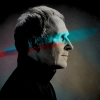
Artur Dutkiewicz: Okno na nieskończoność
Ambasador polskiego jazzu na świecie, szczodrze dzieli się medytacyjną trasą koncertową, zapraszając do szczególnego przeżywania… Więcej >>>

Theo Croker: Świat się zmienia
Dorastał w domu, w którym jazz rozpalał emocje w takim samym stopniu, jak dyskusje… Więcej >>>
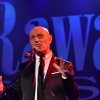
Irek Dudek – 40 lat minęło
8 października w katowickim Spodku odbędzie się 40. edycja Rawy Blues. Z Ireneuszem Dudkiem,… Więcej >>>
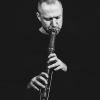
Dominik Strycharski: nie boję się żadnej sytuacji
Kompozytor, eksperymentator, autor jedynej na świecie jazzowej płyty solowej na flet prosty Więcej >>>




